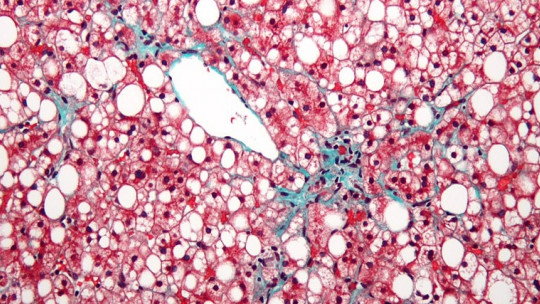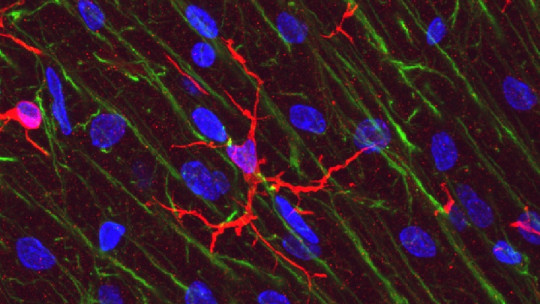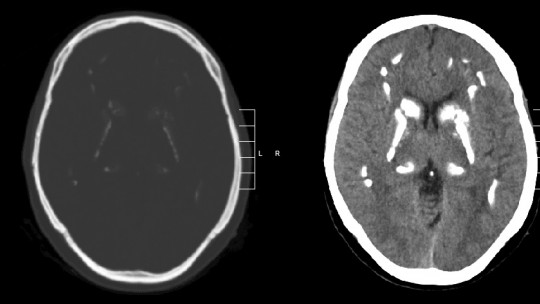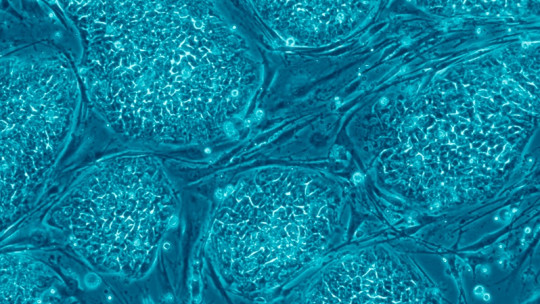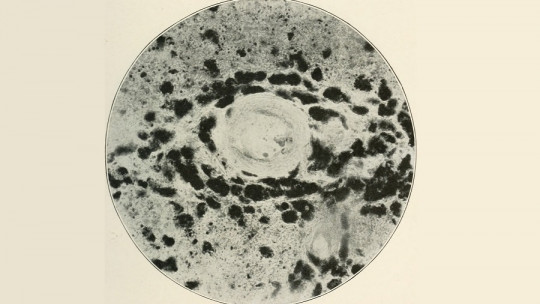Asterixis is a motor disorder present in various liver, kidney, respiratory, cardiac and brain disorders.
It manifests itself in the form of tremors, similar to those made by a bird flapping its wings, and can be caused by many different causes. Let’s delve further into what the characteristics of this clinical sign are.
What is asterixis?
Asterixis (from the Greek “a” and “sterig”, “not to hold”) is a clinical sign used to describe a neuromuscular disorder that consists of the involuntary appearance of rhythmic interruptions of a muscle contraction , and is generally manifested by tremors in the wrist, metacarpophalangeal and hip joints. This problem usually affects both hands, although it may also affect only one in particular.
This problem is also called liver flutter or tremors and was first described in 1949 in patients with severe liver failure and encephalopathy. These muscle movements are completely involuntary and generally appear when the arms are extended and the wrists are flexed. Patients suffering from this medical condition find it difficult to keep the affected body part stable
Although it looks like a tremor and is often called that, asterixis actually It is not considered a tremor in the strict sense of the word, but rather repetitive contractions produced by repeated relaxations of muscles engaged in spontaneous movements. However, when you see a patient suffering from this motor disorder, their physical behavior resembles that of a bird that is moving its wings, which is why in everyday language they are called tremors.
In most cases this condition develops in the hands, but it is not exclusive to that area. Involuntary fluttering can also be observed in other parts of the human body, such as the eyelids, in the form of trembling of the lips and the tongue or involuntary movement of ankles and feet would also be signs of asterixis.

Associated symptoms
Asterixis is a motor disorder whose main symptom is the most visible: involuntary shaking or fluttering of body parts, especially the hands and wrists This tremor usually consists of a sudden and irregular movement, with a frequency of 3 to 5 Hz that occurs when the person stretches their arms and flexes their wrists. The person finds it difficult to maintain a completely fixed position.
This phenomenon can involve joint and muscle pain, as well as weakness and discomfort. As we have mentioned, other parts of the body may also present a motor alteration that would be considered asterixis per se, such as the jaw, tongue, neck and eyelids.
A patient suffering from asterixis may show other symptoms depending on the cause of their motor disorder An example of this is bilateral asterixis caused by a metabolic encephalopathy that usually presents very developed symptoms. In this case, this condition can also be accompanied by a mental state due to irregular levels of neurotransmitters circulating through the blood and causing bizarre behavior.
Although asterixis is a motor condition, it can be accompanied by symptoms such as jaundice (yellowing of the skin) due to a buildup of bilirubin, swelling or edema in the feet, cramps caused by an electrolyte imbalance, and diarrhea which may be accompanied by hemorrhages. Bleeding gums, blood in the urine, and vomiting of blood (hematemesis) may also occur.
Types of asterixis
There may be several causes behind a case of asterixis, ranging from diseased organs to brain injuries. Based on this, Asterixis is mainly classified into two types
1. Bilateral
Among the most common causes of bilateral asterixis we have metabolic encephalopathies, especially hepatic and renal
Alterations in the kidneys and liver are especially harmful to the body in general and to the brain in particular, because by not working correctly, imbalances occur in the levels of electrolytes and other chemical substances in the blood. When organic homeostasis is lost, both the brain and other organs stop functioning properly and this can be evidenced in the form of asterixis.
It is important to highlight the specific link between this type of asterixis and the liver and kidneys. These three organs have a very important role in the body’s metabolism, since they are responsible for eliminating toxic waste from the body, either by metabolizing and inactivating them or, directly, eliminating them from the body through excretion.
One of the main waste products of the body’s metabolism is nitrogen This substance, when it is not eliminated properly, ends up incorporating other proteins in the blood and converts them into aberrant neurotransmitters, which cause the peripheral tremors so characteristic of asterixis.
It should be said that alterations in the liver and kidneys are not the only potential causes behind a case of asterixis. Heart and respiratory diseases, as well as substance poisoning, can also be behind a case of this type of asterixis.
2. Unilateral
Unilateral asterixis It is mainly caused by focal brain lesions in the genu (knee) area of the internal capsule and ventrolateral thalamus
This is because it is precisely in this region where direct nerve fibers emerge from the cerebral cortex with motor action. Lesions in the midbrain, parietal cortex, and medial frontal cortex may also be causes of unilateral asterixis.
Related pathologies
There are several medical conditions in which we can find asterixis as a symptom, both directly and indirectly related.
Hepatic encephalopathy is a common condition in patients with cirrhosis This problem causes brain deterioration that is accompanied by several psychological alterations, such as changes in personality and confusion. Added to this, and as we have commented in the section on bilateral asterixis, hepatic encephalopathy can cause the characteristic tremors of asterixis.
Another condition in which this motor disorder can occur is severe respiratory failure. This respiratory problem is caused when the lungs find it difficult to absorb oxygen and release carbon dioxide, causing headaches and significant loss of reflexes. When the critical point is reached, asterixis can manifest, moment almost immediately before the patient falls into a coma
We can also talk about uremic syndrome, a kidney disorder that occurs when there is poor functioning of the kidneys. As this medical condition worsens, it can result in asterixis as the person progressively loses control of their voluntary motor movement.
Finally we have the fact that substance intoxication can result in this motor disorder. Among the substances that can cause asterixis we mainly have alcohol and medications, including barbiturates, carbamazepine, gabapentin, valproate, lithium ceftazidime and metoclopramide, drugs that all have this motor disorder as a potential side effect.
Other diseases and medical conditions that are attributed to being possible causes of asterixis include:
Asterixis treatment
Treatment for this motor disorder is usually aimed at solving and correcting its cause or the medical condition in which it has presented as a symptom If, for example, what caused asterixis is a substance, whether due to intoxication or as a side effect of a drug, the treatment would simply be to recommend stopping taking that substance or modifying the doses.
However, if what has caused these tremors is a more serious medical condition, such as liver, kidney or lung disorders or a brain hemorrhage, the treatment will depend on the severity of the affected organ. and the possibilities of being able to intervene. The use of antimyoclonic medications is not recommended in patients suffering from asterixis since these drugs are known to worsen symptoms rather than treat them.
If asterixis is caused by end-stage renal disease, dialysis is recommended since it can help with filtering toxic products from the blood and reduce the symptoms, although this method is inefficient in cases where the disease is due to a liver disorder, a liver transplant being necessary in these cases.




